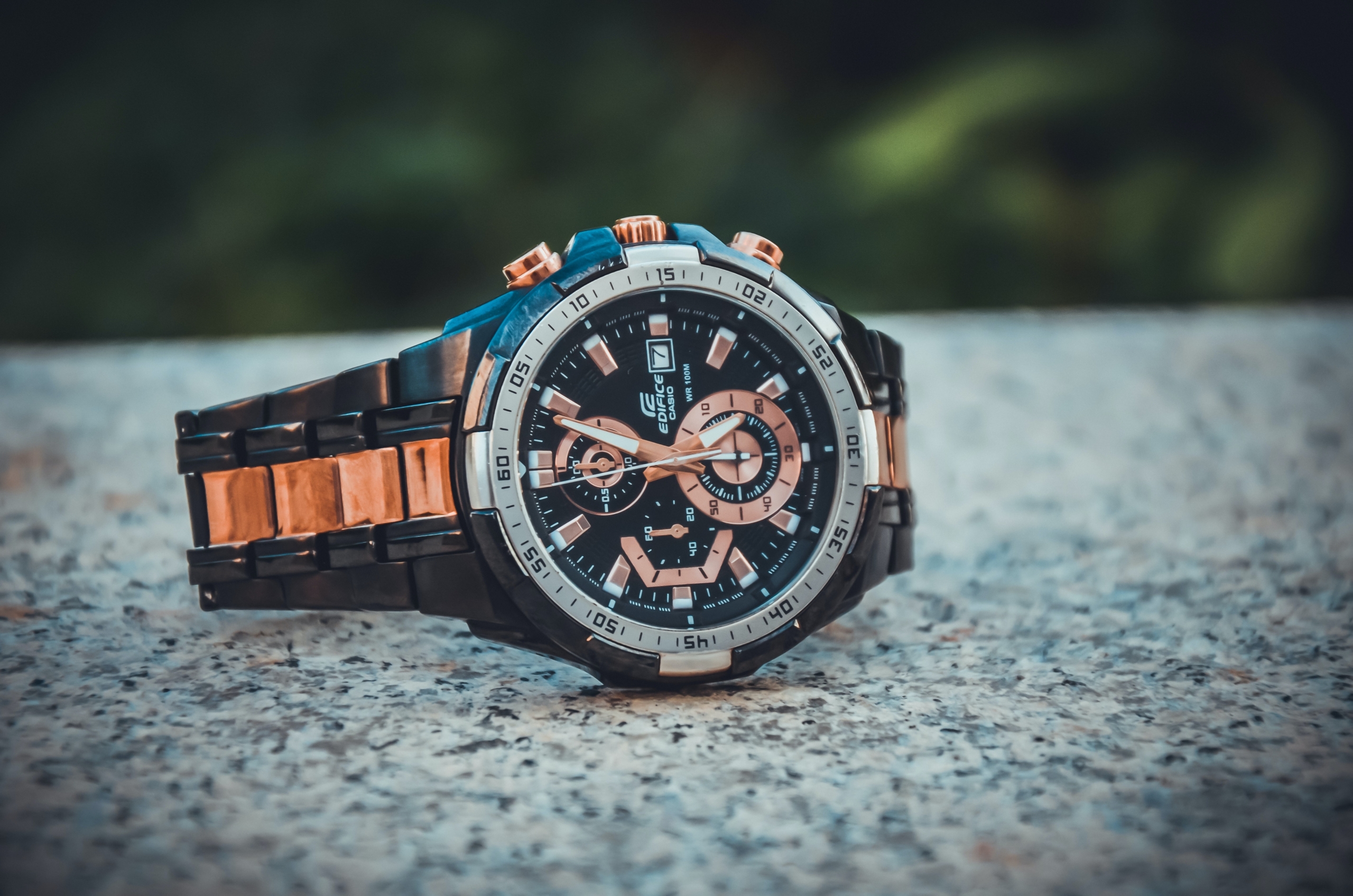When you first start shopping around for a watch, it’s difficult not to focus on the different designs and features. However, investing in a timepiece requires more than just picking the right style.
Anyone who is serious about purchasing the right watch should have an understanding of the different watch movements. Namely, quartz, automatic and manual movements.
Watch Movements Explained
Watches are either powered by batteries or mechanics, which is where the different watch movements come into play.
Each movement has its own advantages and disadvantages, which we will take you through now.
Manual Movements
A watch with a manual movement needs to be wound manually. This particular movement has been around for decades and first made an appearance around the 16th century. A manual watch will feature a crown on the side, which is used to adjust the time. However, it also serves another function – winding the mainspring of the watch.
This mainspring is placed in a barrel, which stores power as elastic energy. As you can imagine, all this energy is gradually released to keep the watching moving for several weeks. This is done using an escapement assembly, which is made up of several delicate parts.
The mainspring transfers power to the escapement assembly via the going train, which is made up of wheels of different sizes. These wheels are what allow the hands to move at different speeds.
To keep a manual watch working, you need to regularly wind the mainspring. Some manual watches will even alert you to the fact that the watch needs rewinding.
Automatic Movements
An automatic watch is made with most of the same components as a mechanical watch, including the mainspring, going train and escapement assembly. However, unlike a mechanical watch, which often needs to be wound by a professional, you can wind an automatic watch yourself. What’s more, you can wind the watch simply by wearing it regularly.
Automatic watches first made an appearance in the 18th century, with Rolex later perfecting the system that was developed by John Harwood. The first Daytona, the Cellini Prince and the OysterQuartz are some of the few watches made by Rolex that aren’t automatically wound.
A set of gears connected to the mainspring barrel are what help wind an automatic watch, all with the help of a rotor that swings around freely inside the watch.
Quartz Movements
Lastly, there are quartz watches, which do have some internal mechanics but mostly need wheels to operate the remaining functions, including the hands. This battery-operated timepiece first made an appearance in the 20th century. However, Seiko was the first watchmaker to make quartz wristwatches available commercially.
Quartz watches are known for their affordability and accuracy, all thanks to the quartz regulator. The battery inside the watch passes electricity to a quartz crystal, which produces pulses and vibrations. A dial motor uses these pulses to make the hands of the watch tick.
How to Decide on a Watch Movement
The type of watch movement that’s right for you is mostly dependent on the type of watch you plan to purchase.
For example, many of today’s vintage and high-end luxury watches have mechanical movements. You would also need to decide if you’re willing to wind your watch yourself or if you’re willing to get a professional to assist you. Quartz watches are the most affordable option and are generally easier to find.
It all comes down to preference.
